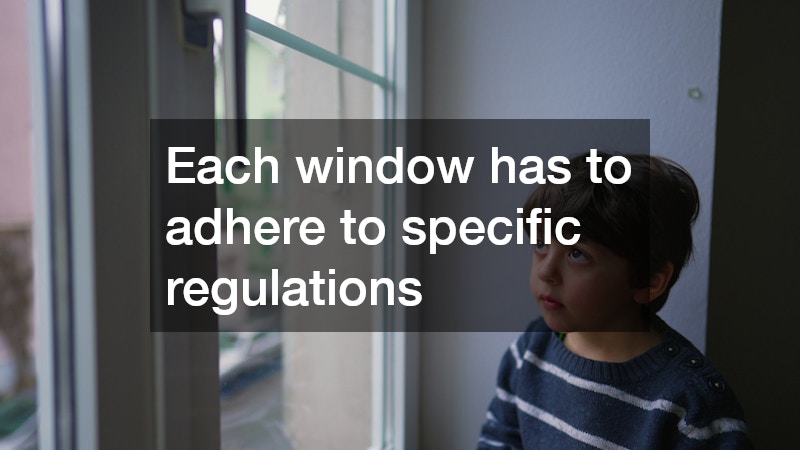Egress windows are more than just a home improvement feature: they’re a vital safety measure designed to provide a reliable escape route during emergencies. Beyond their life-saving role, these windows also help homeowners meet building code requirements while enhancing natural light and ventilation in basements and ground-floor rooms. This guide will walk you through the essential requirements, options, and maintenance tips for egress-style windows, helping you make informed decisions about safety and compliance.
What Is an Egress Window?
The term “egress window” refers to a window that is large enough and strategically positioned to serve as an emergency exit point. Predominantly used in basements and bedrooms, these windows provide a safe and reliable means of escape during emergencies like fires. They also allow first responders to enter the home quickly in case of rescue operations, making them a crucial safety feature.
Each window has to adhere to specific regulations and standards specified by building codes to ensure it fulfills its purpose adequately. A typical egress window has to be wide enough for an average adult to pass through comfortably while also being easy to open from the inside without the assistance of special tools or keys. Understanding these standards is vital for homeowners and builders alike to ensure both safety and compliance with the law.
Beyond safety, egress-style windows also improve a home’s aesthetics and increase property value. Properly installed, they not only ensure compliance with local building codes but can also enhance natural light and ventilation in basements and ground-floor rooms.
Building Codes and Size Requirements You Need to Know
Building codes regarding egress-style windows vary slightly depending on the location, but the consensus revolves around ensuring occupant safety. According to the International Residential Code (IRC), an egress window must have a minimum opening width of 20 inches and a minimum height of 24 inches. The minimum net clear opening—the free space available when the window is fully opened—must be at least 5.7 square feet, except in cases where the window is at or below grade level, where the required opening can be reduced to 5.0 square feet.
It’s also crucial to note the height from the floor to the window opening, which cannot exceed 44 inches. This ensures accessibility for individuals of various heights and ages, particularly children and older adults, who may need to exit quickly in an emergency. A window well may be required if the egress window is below grade level. In such cases, the well must have a minimum area of 9 square feet with a minimum horizontal dimension of 36 inches.
Egress-style windows must be easy to operate from the inside without the use of tools, keys, or extra steps that could impede a quick exit. This specification ensures that even in a panicked state, individuals can easily open the window and exit the premises.
Different Types and Installation Options
Several types of egress windows are available, each designed to suit different architectural styles and functional needs. The most common types include casement windows, which are hinged at the side and swing outward, similar to a door. They offer a large opening for emergency exits and are an excellent choice for basement installations, where the space might be tight and the window needs to open fully.
Another popular option is the double-hung window, which features two sashes that move vertically. While these might not offer the same large opening as casement windows, they are preferred for their traditional look and ease of maintenance. Sliders are another option, providing a horizontally gliding sash which, while often not as generous in terms of escape space, can be adapted to meet egress requirements depending on the size and style.
When selecting and installing egress windows, homeowners must consider both functionality and aesthetics. This involves choosing windows that not only meet building code requirements but also complement the overall design of the home. Professional installation is highly recommended to ensure the windows are fitted securely and properly, avoiding possible future issues with operation or leaks.
Safety Tips and Maintenance for Long-Lasting Windows
Regular maintenance is crucial to keep egress windows in top condition and to ensure they function properly in an emergency. One of the first steps is to guarantee that windows are free from obstructions. This includes keeping window wells clear of debris, snow, or plants that might block access. Periodic inspections should also be conducted to check for rust, rot, or other damage that could compromise structural integrity.
Another vital tip is to regularly test the functionality of the windows. Homeowners should open and close them several times a year to ensure they glide smoothly and have not become difficult to operate over time. Lubricating moving parts can prevent sticking and ensure windows are always ready for use. Consistent inspections and maintenance aid in identifying potential issues early, allowing for timely repairs and preventing more severe problems down the road.
Finally, educating all home occupants on the window’s operation is essential for safety. Each person should practice opening the window to become familiar with the steps involved. In case of an emergency, everyone should be confident and able to utilize the window swiftly. Safety drills should be part of regular household routines to reinforce proper use and response in emergencies.
Egress windows play a critical role in ensuring the safety of your home while also adding value, light, and ventilation to your living spaces. By understanding building code requirements, exploring different window types, and committing to regular maintenance, homeowners can ensure their egress-style windows function effectively in emergencies. Choosing the right egress window solutions and keeping them in top condition is an investment in both safety and long-term peace of mind.





